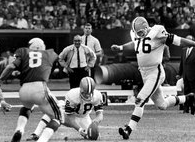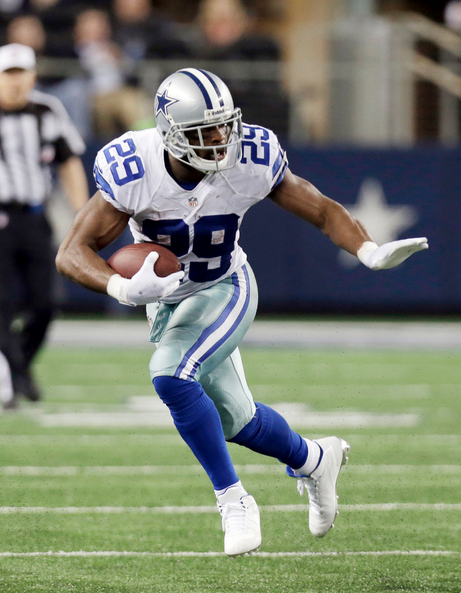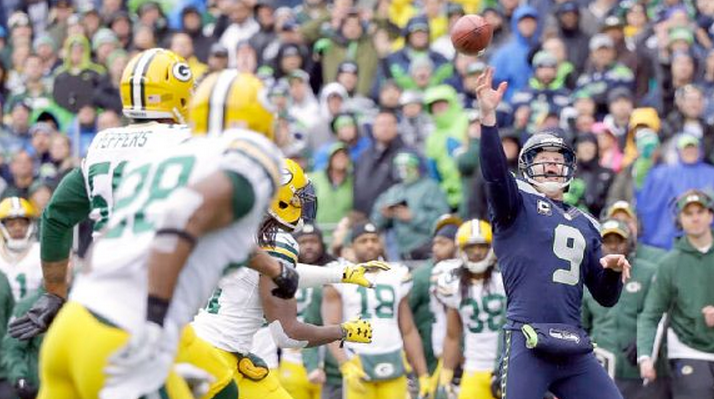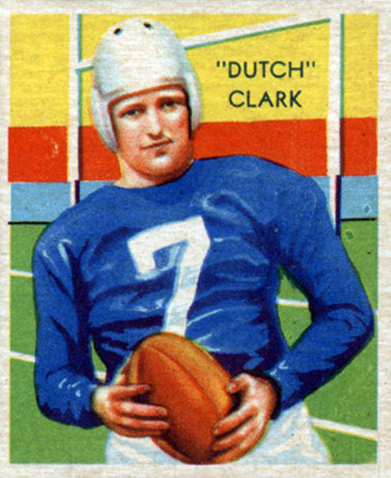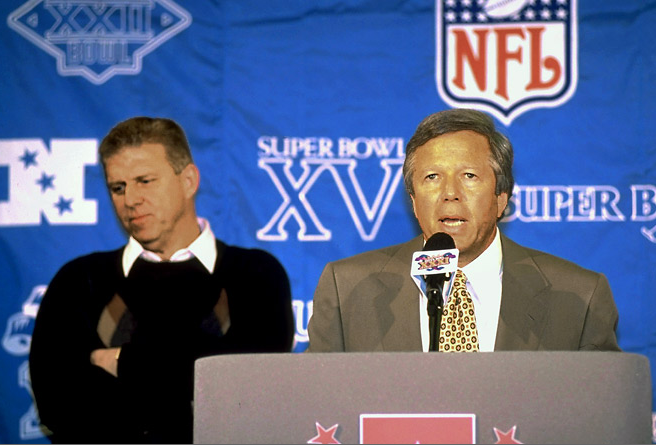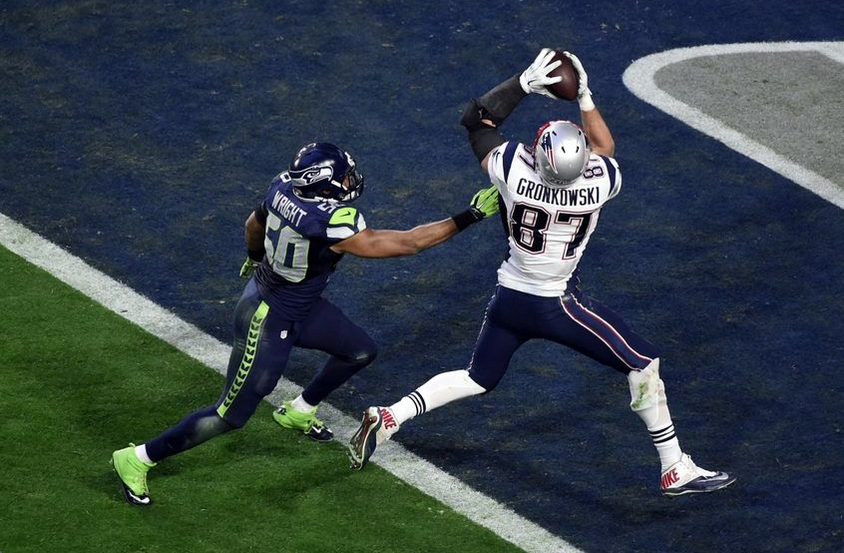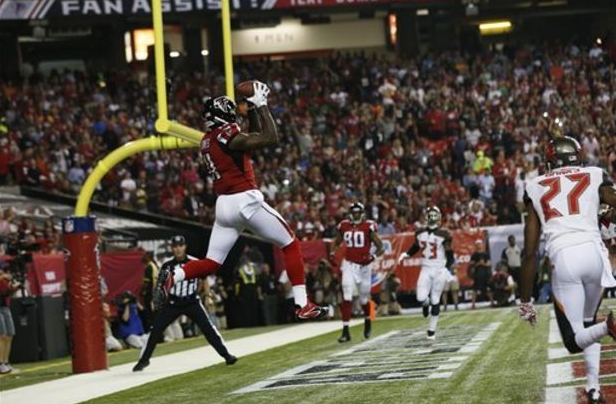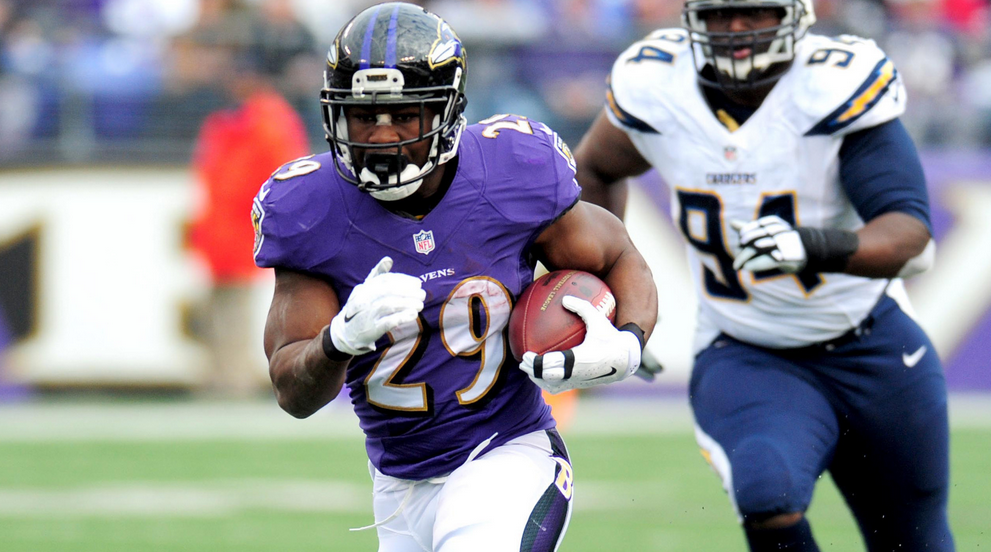At any other position — except maybe punter and kicker — when an NFL player hits 30, you start wondering how much longer he’s got left (or how many Pro Bowl seasons he might still have in him). But quarterbacks seem to have found the Fountain of Youth, what with all the passer-friendly rule changes and the league’s continuing effort to keep them safe.
When a QB reaches 30 these days, he’s often still on the rise — his play becoming more refined, his health no worse for the wear. Tom Brady just rallied the Patriots to a Super Bowl victory at the age of 37. The year before, Peyton Manning took the Broncos to the title game — and had one of the greatest seasons in pro football history — at the same age. And we may not have heard the last from either of them. The Patriots, remember, are still young, even if Brady isn’t (chronologically, at least).
You can’t ask for a better situation than that, not in a league that considers quarterbacks its first, second and third most important commodities. If QBs can play at a championship level well into their 30s — while everybody around them is aging more quickly — the NFL will never have a worry in the world, entertainment-wise. It might even be able to handle another round or two of expansion, which you know the owners want.
Let me show you what I mean about quarterbacks performing better as they get older. Note I didn’t say, “getting better as they get older.” It’s harder to measure that. After all, what a QB might gain over the years in terms of judgment and understanding, he might lose in arm strength and mobility. Does that make him a better player, necessarily, or just one who wins in a different way? But performance is measurable — through statistics. (And obviously, some of the improvement can be attributed to the aforementioned rule changes, which pushed the league-wide passer rating this past season to 87.1, an all-time high.)
Anyway, after crunching some numbers, I learned that not only does a quarterback’s rating tend to improve in his 30s, sometimes dramatically, he often throws more passes in his 30s than does in his 20s. The second discovery was a bit of a shock. Imagine if this was true of the average running back, receiver or pass rusher. Imagine if the NFL had across-the-board longevity like that. (Not that some the rules favoring passers don’t also help the guys doing the catching.)
Brady is a classic example. In his 20s he had a rating of 88.4 (on 3,064 pass attempts); in the 30s he has a rating of 101.5 (on 4,104 attempts) — an increase of 13.1 points. That’s tops among active quarterbacks who have thrown 1,000 or more passes on both sides of the 30 divide.
A QUARTERBACK’S 20S VS. HIS 30S (ACTIVE QBS ONLY)
[table]
Quarterback,Team(s),20s Rate (Att),30s Rate (Att),+/- Pts
Tom Brady,Patriots, 88.4 (3\,064),101.5 (4\,104),+13.1
Drew Brees,Chargers/Saints,89.4 (3\,650),101.2 (3\,808),+11.8
Peyton Manning,Colts/Broncos,93.5 (4\,333),101.2 (4\,716), +7.7
Tony Romo,Cowboys,95.6 (1\,857),99.2 (2\,353), +3.6
Ben Roethlisberger,Steelers,92.1 (3\,313),97.5 (1\,641), +5.4
Philip Rivers,Chargers,95.3 (2\,902),96.4 (1\,776), +1.1
Matt Schaub,Raiders/2 others,91.5 (1\,987),86.0 (1\,204), -5.5
Michael Vick,Falcons/2 others,75.9 (1\,743),86.0 (1\,204),+10.1
Eli Manning,Giants,80.2 (3\,332),85.7 (2\,277), +5.5
Carson Palmer,Bengals/2 others,88.4 (2\,595),84.0 (2\,311), -4.4
Matt Hasselbeck,Seahawks/3 others,84.0 (1\,823),81.4 (3\,251), -2.6
[/table]
So you’ve got 11 active quarterbacks who have thrown 1000+ passes in their 30s. Eight have posted a higher rating than in their 20s, three have gone the other way. And naturally, the lower your rating in the 20s, the more room there is for improvement in later years.
It’s amazing how close Brady, Brees and Manning are in their 30s, as far as their passing efficiency goes. Just three-tenths of a point separates them. And all of their ratings, of course, are over 100. That’s mind-boggling, especially when you consider how rare a 100 rating used to be (in a single season or even a game). But that’s the direction the game is going — to take nothing way from today’s quarterbacks. QBs can play forever — and play well. They might not always be worth franchise money, but they can be far more than just functional.
Compare the above list with the one below of selected Hall of Fame quarterbacks. Some saw their rating go up in their 30s, some saw it go down. It was a very mixed bag. And again, these men are in Canton (or, in the case of Brett Favre, headed there).
HALL OF FAME QBS: THEIR 20S VS. THEIR 30S
[table]
Quarterback,Team(s),20s Rate (Att),30s Rate (Att),+/- Pts
Steve Young,Bucs/49ers,81.3 (976),101.6 (3\,173),+20.3
Joe Montana,49ers/Chiefs,92.4 (2\,571),92.1 (2\,820), -0.3
Bart Starr,Packers,74.6 (1\,546),86.2 (1\,603),+11.6
Jim Kelly,Bills,82.7 (1\,742),85.3 (3\,037), +2.6
John Elway,Broncos,73.6 (3\,070),84.5 (4\,180),+10.9
Dan Fouts,Chargers,75.5 (2\,594),84.3 (3\010), +8.8
Dan Marino,Dolphins,88.6 (4\,234),84.1 (4\,124), -4.5
Warren Moon,Oilers/Vikings,69.6 (1\,191),83.8 (4\,809),+14.2
Brett Favre,Packers/2 others,88.8 (3\,883),83.5 (5\,522), -5.3
Sonny Jurgensen,Eagles/Redskins,79.1 (1\,107),83.3 (2\,988), +4.2
Bob Griese,Dolphins,74.0 (2\,014),81.7 (1\,415), +7.7
Len Dawson,Chiefs/2 others,85.6 (1\,061),80.9 (2\,540), -4.7
Terry Bradshaw,Steelers,62.1 (2\,019),80.4 (1\,882),+18.3
Fran Tarkenton,Vikings/Giants,81.0 (3\,022),79.8 (3\,455), -1.2
Johnny Unitas,Colts,79.4 (2\,316),78.2 (2\,794), -1.2
Troy Aikman,Cowboys,83.6 (3\,068),77.9 (1\,647), -5.7
Joe Namath,Jets/Rams,69.3 (2\,605),56.9 (1\,157), -12.6
[/table]
In this group we have nine gainers and eight decliners — a totally different story. Part of the reason is that some of them played before 1978, when the NFL started outlawing defense. As a result, rule changes didn’t help them much later in their careers. The game was essentially the same (in terms of its policing, that is).
No one’s saying other factors might not have affected these quarterbacks — their supporting cast (coaches included), for instance. But it’s clear there’s never been a better time to be a QB than right now. Your star can keep shining, brightly, deep into your 30s. The Million-Dollar Question is: Who’s going to be the first QB to win a Super Bowl in his 40s? It’s bound to happen one of these days. You just know it is. (Look at how close Brett Favre came with the Vikings in 2009.)
Source: pro-football-reference.com

This is no longer the image of the NFL quarterback in his late 30s (the Giants’ Y.A. Tittle in 1964).


